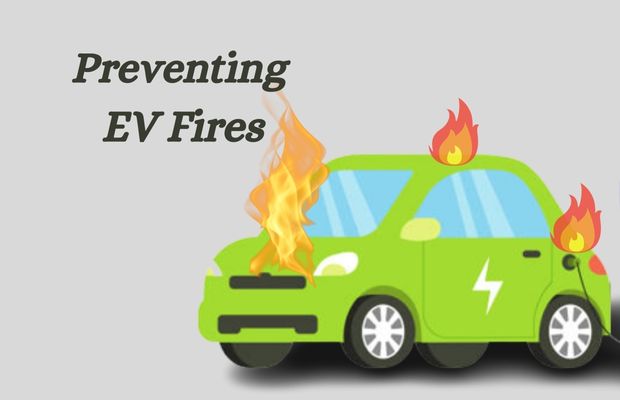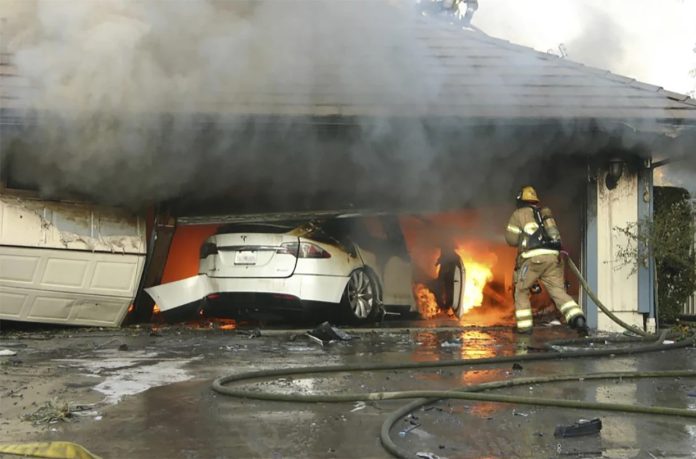Electric vehicles (EVs) are known for their efficiency and lower operating costs compared to petrol or diesel. Using renewable energy sources can further enhance their eco-friendliness. However, a recent incident in Florida during Hurricane Helene has highlighted safety concerns associated with EVs.
A house in Siesta Key, Florida, caught fire after a Tesla Model X Plaid burst into flames in the garage, allegedly due to contact with saltwater. The incident occurred on Sunday night, with nine people inside the home.
The homeowners were asleep when two grandchildren heard strange popping noises and alerted the elders. The family discovered the vehicle on fire and quickly evacuated. The blaze engulfed the car and garage in under a minute.
“I’m just glad we’re alive, but everything we’ve built over 38 years is gone,” homeowner Lisa Hodges said. “We built it for our family, and it’s all gone.”
While the exact cause of the fire is still under investigation, officials suspect the Tesla’s battery exploded after coming into contact with saltwater from Hurricane Helene. Local authorities have now deemed such batteries a “fire hazard” and advised the public to move them away from homes.
“If your electric vehicle came in contact with flood water, don’t charge or start it,” Dunedin Fire Rescue warned on X, formerly Twitter. “Stay safe and let professionals inspect it first.“
During Hurricane Idalia in 2023, two EVs caught fire due to floodwaters near Tampa. Similarly, after Hurricane Ian in 2022, there were 21 EV-related fires.
What to Do if Your Vehicle is Submerged
In Nigeria and many parts of Africa, where roads often become waterlogged or develop large gullies, it’s important to take note of these issues before embracing electric cars. Experts warn that if your electric vehicle (EV) stalls in waterlogged place, do not try to restart it.

Tesla, a global leader in electric cars, advises leaving the vehicle right away and moving to higher, dry ground. Do not operate the car until it’s inspected by an authorized professional. They also recommend moving the car at least 50 feet away from buildings and anything flammable.
Comment, Like 👍, share this article, and Follow us on our social media handles.







